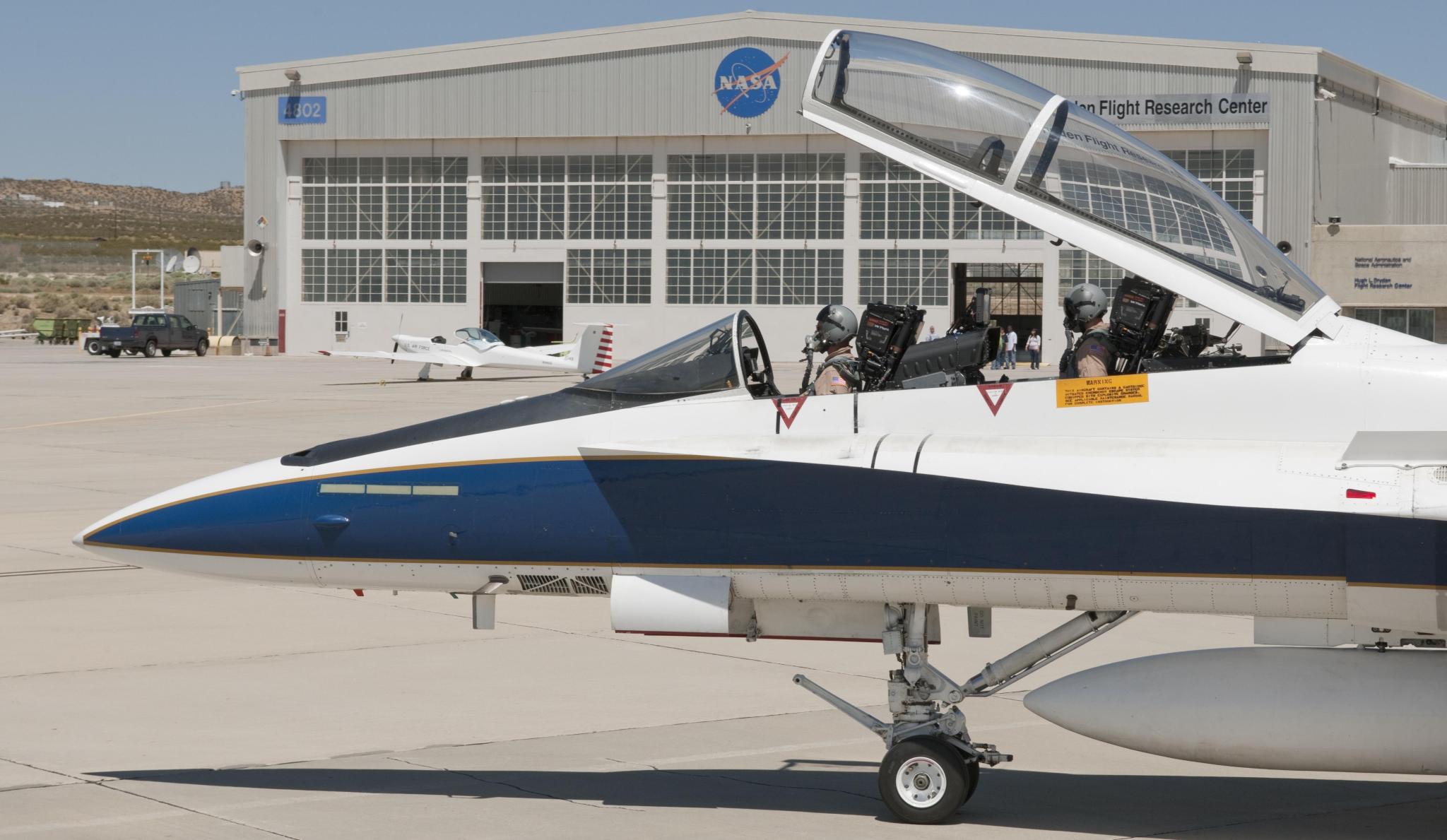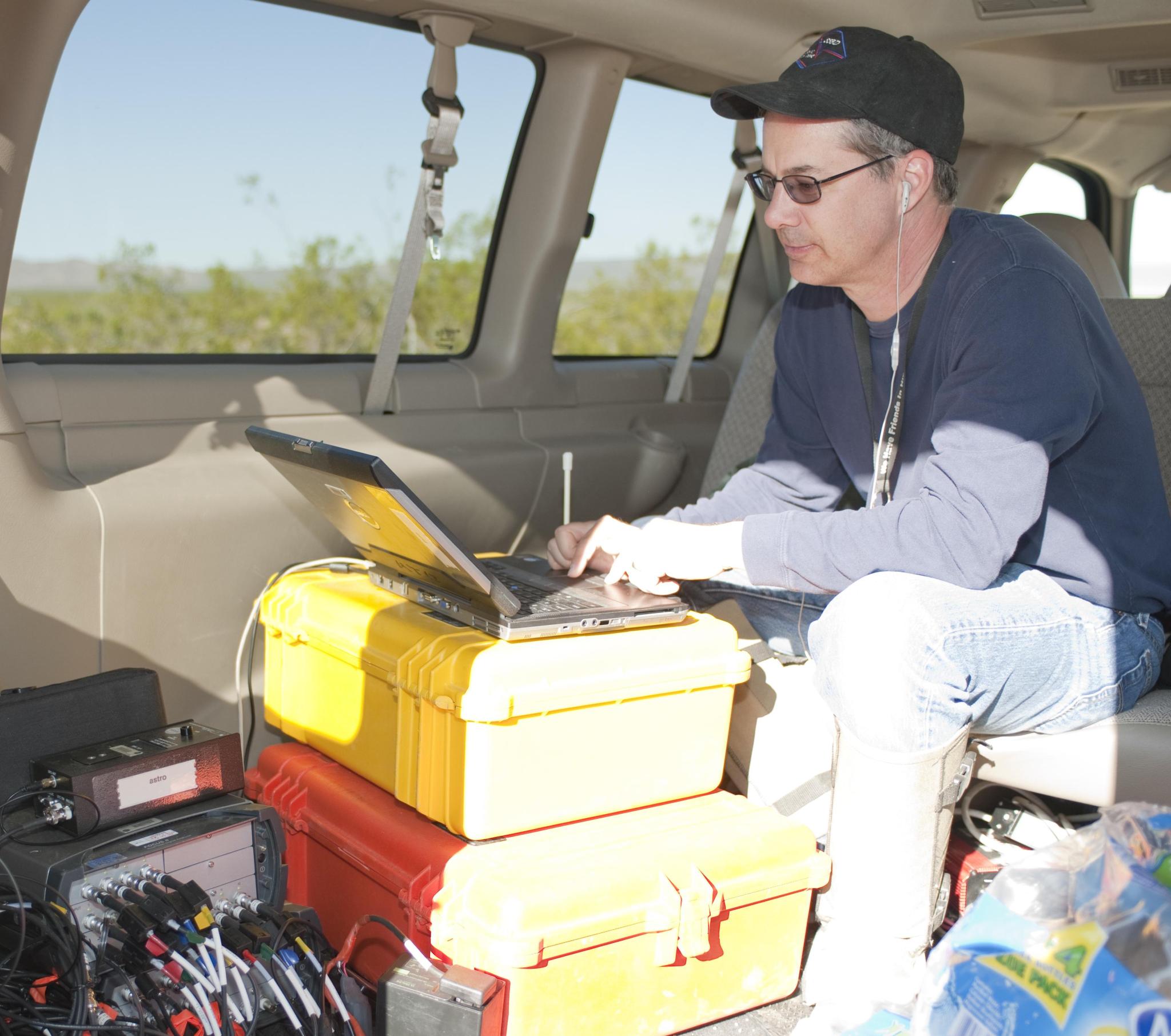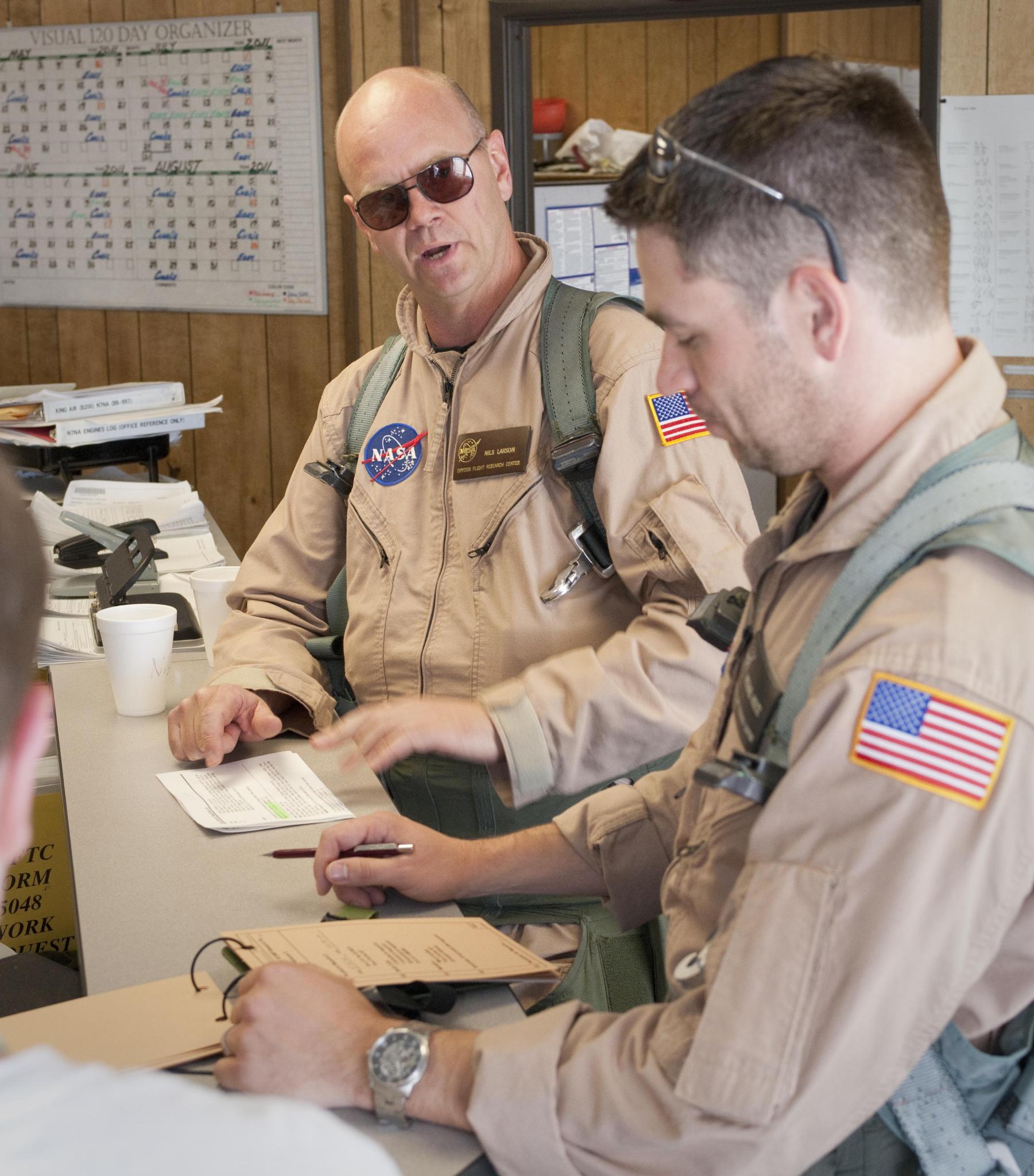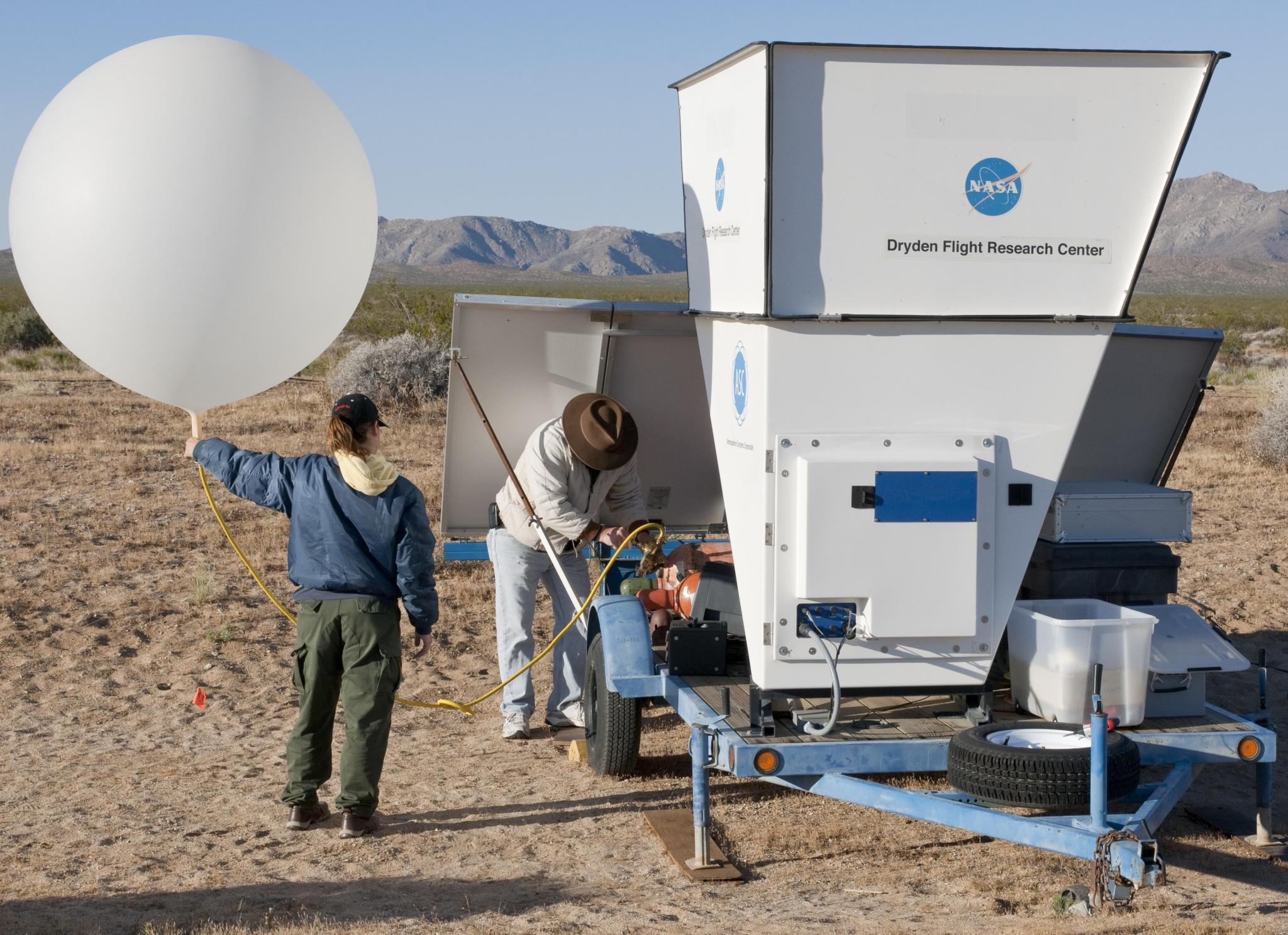
In an ironic twist, NASA is using supersonic aircraft to produce amped-up, super-loud sonic booms in an effort to understand how to minimize their startling impact and thereby be able to design future quiet supersonic aircraft.
“The ultimate goal is to allow supersonic transportation over land,” said Edward Haering, principal investigator for the Superboom Caustic Analysis and Measurement Program, or SCAMP, at NASA’s Dryden Flight Research Center in California.

Researchers recently employed a two-mile long string of microphones to record the thunder of an accelerating F/A-18 jet for the SCAMP project.
“When a supersonic aircraft accelerates to its cruise speed, a focusing effect occurs that makes the sonic boom five to 10 times louder than its normal cruise sonic boom over a small region,” said Haering. “This effect is similar to how light rays are focused by a lens.”
SCAMP measured these focused booms to help ensure that tomorrow’s supersonic jets are quiet in all phases of flight, including acceleration.

The measurements will be used to validate computer prediction tools that will be used in the design of future quiet supersonic aircraft. If the predictive tools can accurately mirror the louder-than-normal booms that were generated through SCAMP, then researchers will have confidence that they are capturing the right acoustics and aerodynamics effects, and they can then be used with confidence to guide the design of supersonic aircraft whose sonic booms are quieter than have ever been achieved before.
The primary ground microphone array was nearly two miles long and consisted of a straight row of 81 microphones set 125 feet apart along an east-west dirt road. An Edwards Air Force Base staff biologist experienced with desert environments helped keep the project’s sensor locations away from sensitive species.
Airborne microphones were mounted on a Dryden TG-14 motorized glider with sound recording equipment that flew between the booming F/A-18 jet and the ground at altitudes from 4,000 feet to 10,000 feet to record the SCAMP booms. Additionally, a 35-foot-long blimp was tethered at 3,500 feet above ground with two microphones along its tether.
The flights were flown in the remote Black Mountain Supersonic Corridor north of Boron, Calif., in restricted military testing airspace near Edwards in which supersonic flight is allowed. The project went to great lengths to keep the SCAMP sonic booms away from populated areas.

The complex effort involved several partners including Dryden, NASA’s Langley Research Center in Virginia, Wyle Laboratories, The Boeing Company, Northrop Grumman, Cessna, Gulfstream, Central Washington University, Penn State University, Eagle Engineering, MetroLaser, Inc., and Seismic Warning Systems Inc.
“It was operationally complex, given the number of team members, and logistically complicated, given the remote location of the microphone array, the unpaved roads leading to the site, and the communication between all the players, assets and the control room at Dryden, which is about an hour and a half drive away” said Dryden’s SCAMP project manager, Tom Jones.
“However, given the challenges, the SCAMP team worked together to gather one of the most interesting sets of supersonic flight research data that the supersonic community has seen in some time,” said Jones. “The data represents 13 flights that generated 70 sonic boom events.”
It may seem a little non-intuitive to make lots of sonic boom noise in learning to quiet them, but it’s proving effective in helping engineers understand what they need to do to design low sonic boom-producing aircraft.
SCAMP was funded by NASA’s Aeronautics Research Mission Directorate in Washington and managed by the Supersonics Project in the directorate’s Fundamental Aeronautics Program.
Author: Gray Creech
































